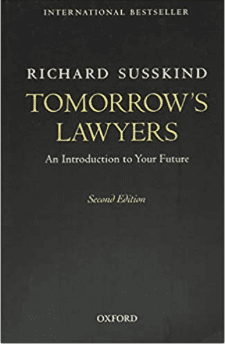SUN’S 1794 HOMEOWNERS AND BUSINESS OWNERS FIRE INSURANCE PROPOSAL/POLICY
This Proposal is very much like the proposal Sun Fire Office (aka Sun Insurance) issued in 1724. The abbreviated discussion of it here depends on the discussion of the earlier one that has been discussed in a post in Quinn’s Commentaries on Insurance Law dated November 8, 2020. It should be read first, since this one is derived from the earlier one, and differs from it only somewhat as to both formatting and content, although the Roman numbered Articles are not completely in the same order. There was another similar proposal/policy put out in 1816.
Here is how some of the differences look. The 1727 Proposal states in the normal prose, right after the “Whereas Clauses,” that “Insurances may be made on the following terms and conditions.” The 1794 Proposal makes the statement as a title; it is indented, and reads this way:
“INSURANCES may be made on the following TERMS and CONDITIONS”
There is no explicit distinction Article-by-Article between terms and conditions in either policy. That will change in an early Nineteenth Century fire policy Sun issued.
The numbers on the Articles do not always match up. The contents of the matching articles are at least quite similar, though there are differences. The Articles in the 1794 issue are all titled.
One similarity is to be found in ARTICLE IV of both policies. This Article in the 1794 Proposal is entitled “The Several Heads of Insurance.” The term “Head” designates what is to be found at the top of a list, and the Heads are the same: “Common Insurances,” “Hazardous Insurances,” and “Doubly Hazardous Insurances.” They each list categories of objects (including buildings) and the types of work that are or are not covered. Many of them are the same or tantamount to the same. They could have been called “headings.
In the 1727 policy, the column headed with “Hazardous Insurances, concerned almost only different sorts of buildings. The 1794 Proposal, however, lists a few activities in the “Hazardous Insurances” section, as well as objects. For example, in the 1797 Proposal adds as hazardous “Out-Houses (having no chimnies, or adjoining to any Building having a Chimney) containing Farmer’s stock or implements of husbandry[.]” On the same list are including stone or brick building in which wherein hazardous Goods of Trades are deposited or carried on [such X, Y, and Z.] The 1727 language said nothing about hazardous activities in the “Hazardous Insurance” sub-section. The idea there was that wooded, etc., buildings in which no hazardous activities were carried on constituted a separate category.
The 1794 policy changed the categorization within “Hazardous Insurances.” Now it included brick and stone building within which hazard work is taking place. In the 1797 Proposal and Policy-model, there were activities that were to be found in the “Doubly Hazardous” subsection of the 1727 Proposal.
Further, the 1794 version, contains new activities (or those performing new activities) within the “Doubly Hazardous” category; these include Brewers, Carpenters, Colour-Men, Coopers, Victuallers, SailMakers, plus various mercantile stocks, including, for example, Spirituous Liquors. MSQ: “hard liquor,” no doubt.
The “Doubly Hazardous Insurances” included even more, separately listed, additional activities and goods, including Salt-Petre, Sea-Biscuit Bakers, Oil-Leather Dressers, Boat-Builders, and others, some of which are quite similar to those listed in the 1727 Proposal/Policy-model, though formulated more generally.
Both Proposals provide for ways in which coverage can be expanded. In the 1727 policy, the expansion had to do with amounts. The same is true in the 1794 Proposal but it also includes different activities that might be covered. Obviously obtaining inclusive “indorsements” [original spelling] would increase not only coverage but premium amounts. Just as obviously, there would probably be some negotiations under some circumstances, paired with speculation as to credible and proper premium increases.
The list of further activities in the 1794 Proposals is quite long, but it gives an indication of the industrial evolution of Great Britain in the Eighteenth Century. Here are some interesting elements: Mills and stock therein, Mills and buildings containing any kiln, Manufactories of a Commodity deemed hazardous: such as Coach-makers, Musical-Instrument-makers, Umbrella-makers, floor-cloth painters, sail-cloth-makers, “along with all operations attending the manufacturing of such materials from the raw state into the thread for the weaver, or such like”, by reason of the nature of the trade, and narrowness of the place or other dangerous circumstances, which special hazard must be inserted in the policy to render the same valid and in Force.
MSQ: All this is found in Article V, which is untitled. One can imagine what kinds of problems these provisions invited. What had to be in the application-for-insurance documents, i.e., the “‘bespeaking’ documents”? Were there inspections? Was there negotiation as to what had to be disclosed? In other words, the 1794 provisions are close to the same as those of 1727, but they are also much modern.
Some of the general exclusions are the same as between the 1727 policy and the 1794 policy. “No Loss or Damage to be Paid on Fire happening by any Invasion, Foreign Enemy, Civil Commotion, or any military or usurped Power whatever.” [Article VII of 1727 Proposal and Article VIII of 1794 Proposal. The phrase “civil commotion” will turn out to be important, as we shall see in a subsequent Post.]
The Other Insurance, Move-Habituation, Heirship, and Claims Clauses, are substantially the same. The 1794 Proposal/Policy is clear that its similar clause covers commercial buildings moves, such as warehouses, as well as houses. It is also clearer that insurance for buildings and insurance for personality such as commercial goods are quite separate risks and therefore priced independently. A change in the building does not necessitate a change is a premium for goods kept therein, though if the buildings are quite different, there may be a change in the risk the good are facing.
The clauses in the two policies that say that one policy can cover more than one building and contents are different, or potentially, quite different. In Article V of the 1727 policy, it states that more than one building and the contents therein may be under one policy, subject to the various limits found in the Table. Article VI of the 1794 policy is far more detailed about the sorts of personality that are included: “Printed Books, Prints, Stock in Trade, Goods in Trust or on Commission, or Wearing-Apparel, and Plate therein may be included in one Policy, provided that the Sum insured on each is particularly mentioned.” [Notice that there is no reference to various categories in the “Table” in the 1794 Proposal. Notice also that the word “Plate” is singular and in the list of commercial personality.]
Both Proposals contain clauses at the end of the document discussing or promising fire protection and firefighting personnel. The description in the 1794 policy about this important topic is more detailed than in the earlier one.
This policy was followed by another Sun policy in 1816. They are formatted differently, and some of the details differ, but the general approach and distinct categories is the same, or nearly the same. Both of the policies are to be found in Vol 1 of the David Jenkins & Takau Yoneyama HISTORY OF INSURANCE (2000). THE 1794 policy. is at pp. 145-48 while the 1816 policy is found at 149- 52. One of my favorite slight differences is that the 1816 policy insures “lime-barges and their contents,” while the 1794 policy does not, at least explicitly.
[MSQ: Reader–please do not conclude that every similarity and every difference involving these two historic policies have been discussed herein. Some might say that this blog is already too long, as is.]




Recent Comments